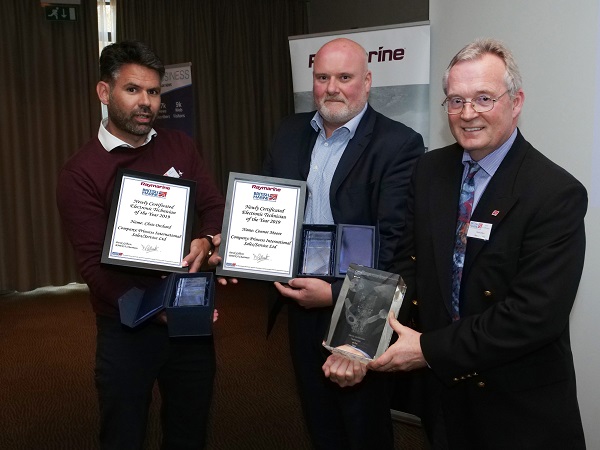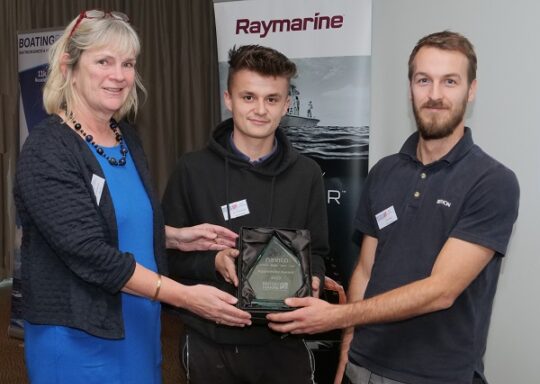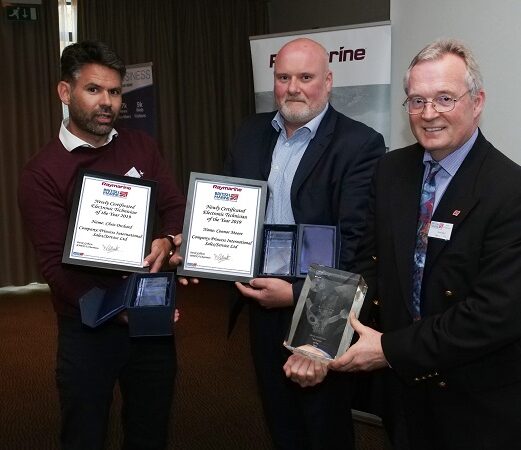Whether it be a direct hit or near strike, the likelihood is that all electronics on board a vessel will have some measure of damage caused by a direct lightning strike or close proximity to a significant Electrostatic discharge.
Given the nature of an integrated system onboard of electrics and electronics it is impossible to predict what route the static discharge will take as is goes to ground and it also depends whether the boat or boatbuilder or installer made any precautions to try to protect against such an event.
The damage to equipment, cabling and ancillaries can be immediate and components are blown up instantly or damage can be partial and the components will fail at an indeterminate period thereafter. It is also likely the majority of other electrical equipment onboard will either be damaged or partially affected and will prematurely fail at some future point in time.
The Electrostatic discharge will cause random damage to PCBs and especially will destroy ICs and flat pack devices, as well as arc across copper tracks completely or partially severing them.
There is limited protection which can be provided to electronics to protect against static damage, simply due to the massive energy levels involved, however, installations can be given limited protection, simply by bonding all rigging to deck fittings and to an independent grounding plate using appropriate sizes of copper strapping will offer a reasonable level of protection.
The provision of lightning protection should be considered if the craft is intended for use in an area where there is likely to be a high incidence of electrical storms, for example inland lakes, Caribbean, North East Asia are all areas of significant Electrostatic activity.
There is a standard ISO 10134 : 1993 for lightning protection on small craft.
GENERAL PRINCIPLES
Lightning protection is the provision of a direct low resistance path from the masthead to a ground plate on the craft. It should be noted that lightning tends to take the shortest path. The connection from each mast or air terminal should be in a straight direct path vertically down to low level then horizontally direct to the ground plate on the hull or to a metal keel.
Usually the mast, rigging, stanchions and toe rail are all bonded together and are grounded to the sea through a grounding plate, this offers a good degree of protection, but again, depending on the size of discharge may still not offer a complete solution
ZONE PROTECTION
The zone of protection is equivalent to a cone, its point coincident with the top of the mast and the cone having a radius round the craft equal to the height of the mast and centred on the mast base – for example this can be formed by the effective bonding together of mast, shrouds and other standing rigging.
GROUNDING CONDUCTOR/WIRE CONDUCTOR
To provide an adequate lightning grounding conductor the entire circuit from the top of the mast or air terminal shall have a mechanical strength and conductivity not less than that of an 8 mm2 copper wire conductor., this can also be in the form of flat copper tape or strip of a similar cross section area.
LIGHTNING GROUND CONNECTION/PLATE
Any metal surface which is submerged in the water in any condition of heel or trim and the wetted surface area of which has an area of least 0.1m2.
Metallic radio ground plates or dynaplates may be used for the lightning ground connection.
NOTES:
i) Complete protection from equipment damage or personal injury may not be achieved and is not implied.
ii) Craft with metal hulls, if there is electrical continuity between the hull and the mast or other metallic superstructure of adequate height, no further protection against lightning is necessary.
iii) If a craft has been stuck by lightning, the compass, electronic and electrical gear should be checked for damage or change in calibration.
It is the customer’s/ boat builder’s responsibility to ensure the equipment onboard is correctly and effectively bonded and grounded and adequate lightning protection is provided
Our recommendation to customers is to completely replace all electronics that are in the affected circuit – replace cabling and switch gear since they may also have been damaged or burned as well as replacing any associated ancillary equipment which may also have been affected.










